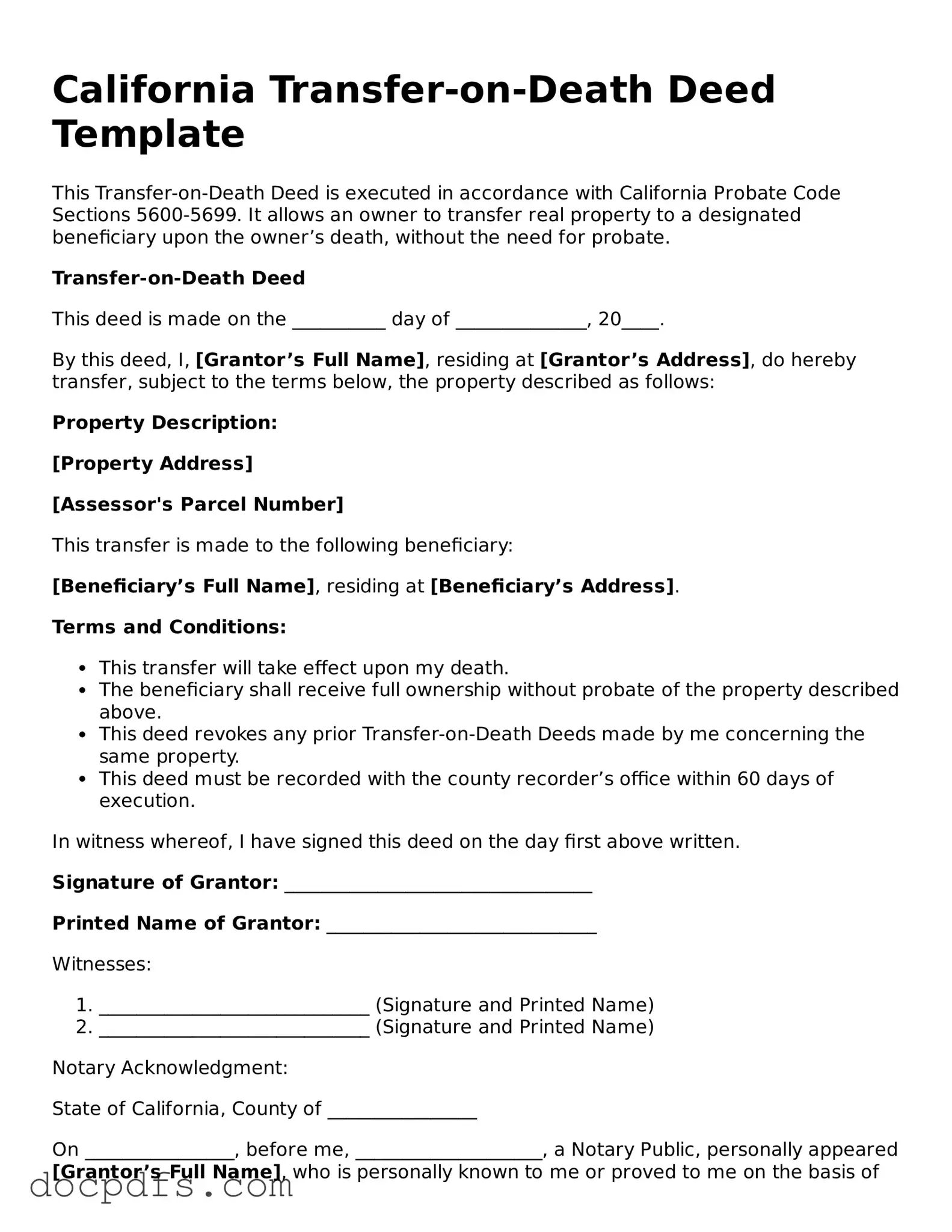Free California Transfer-on-Death Deed Form
The Transfer-on-Death Deed form is a legal document in California that allows property owners to transfer their real estate assets directly to beneficiaries upon their death, bypassing the probate process. This deed provides a straightforward method to ensure that your property is passed on according to your wishes. Understanding how to properly utilize this form can offer peace of mind and simplify estate planning.
Open Transfer-on-Death Deed Editor Now
